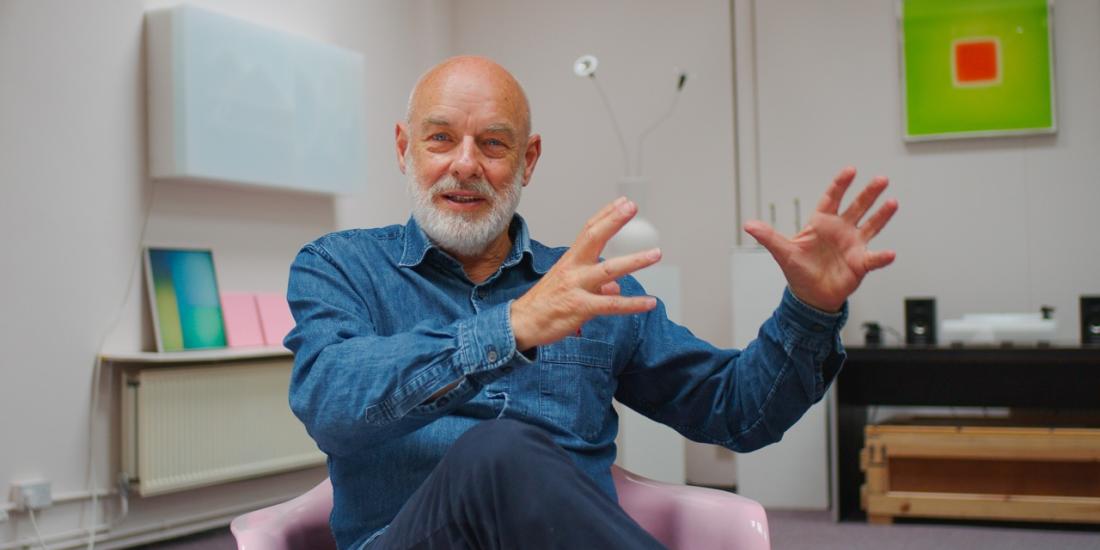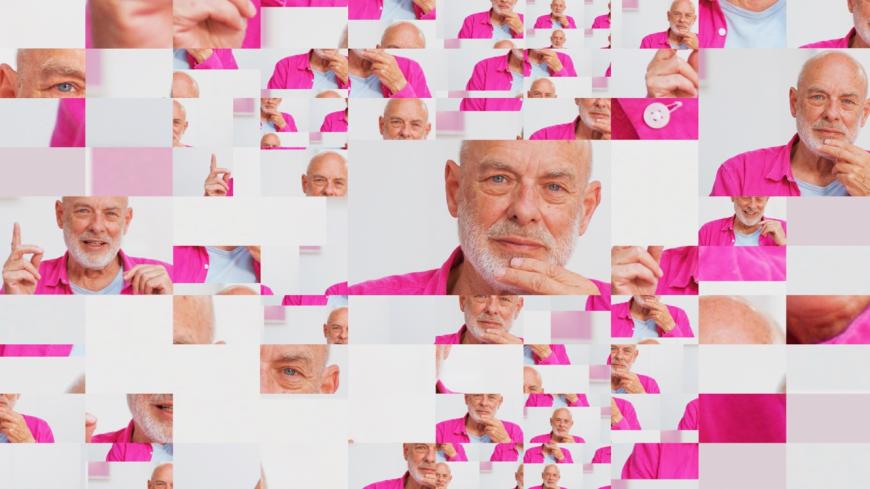1. A film that changes with each screening: the unique experience of a generative film
Each session is a first. This narrative plasticity is an unprecedented innovation in documentary film-making. Tired of the fixed format of film, Gary Hustwit has come up with a device where the viewer can witness the story being constructed at first hand.
2. Diving into a treasure trove of unpublished archives
“Ultimately we’re trying to create a cinematic experience that’s as innovative as Brian’s approach to music and art,” explains Gary Hustwit. As well as producing hits for Bowie, U2 and Talking Heads, Brian Eno is a pioneer of ambient music. He uses technology to push back the boundaries of creation. The film is immersed in this boundless quest, drawing on hours of rare footage, some of it filmed by Eno in the 1980s. Combined with exclusive interviews, these archives reveal an extraordinary career.
3. A film about creativity, not generated by AI
Gary Hustwit describes Eno as “a film about creativity”. A documentary about Brian Eno, his ideas and his life. The audience sees real videos of real people. “There’s been more editing on this film than in any project I’ve ever been involved with. Software isn’t making the footage.” Digital artist Brendan Dawes, a Hustwit collaborator, explains: “This is our own proprietary software system. We’ve spent years programming this [...] It's not trained on anyone else’s work, this isn’t ChatGPT or Runway.”
4. How do you set up a scene when you don’t know if it will appear, or where?
One of the challenges of the process was to construct captivating sequences without knowing how they would be arranged. “Ultimately we decided it would be appropriate and visually interesting to foreground the code and the generative operations, so that audiences can experience the process of how the film is being made while they’re watching it,” explains Hustwit. Brendan Dawes adds: “When you’re watching the film, you’re seeing the process of that version of the film being made. You’re actually seeing the code and the choices our generative engine is making dynamically while you watch.”
5. The idea of using generative software as part of the creative process isn’t new
“The idea of using generative software as part of the creative process isn’t new. We have an amazing archival video of Brian in 1996 demonstrating an early generative music software program to a group of people in his studio,” says Hustwit. “Even as early as the 1960s, artists like Vera Molnár used generative computing in their work. Our film might be the first time this approach has been utilised in a feature documentary, but using generative systems in creativity has a long history. It’s just that the technology has advanced much further now.”


